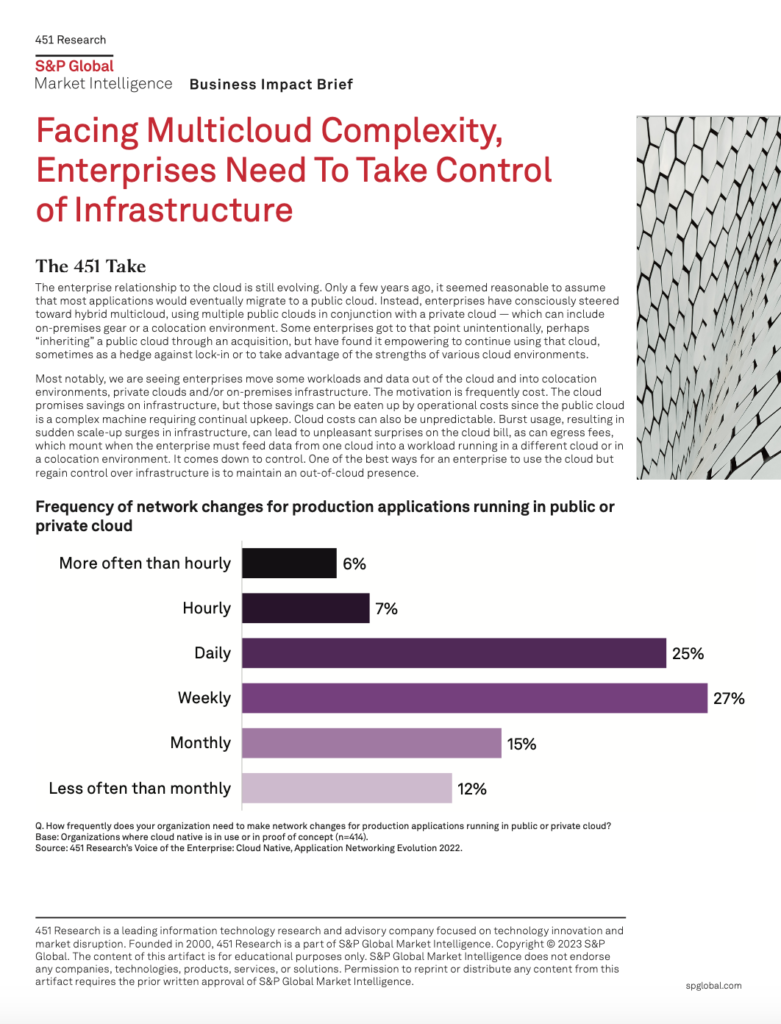
SNPI 451 Research BIB Flexential Asset

The enterprise’s relationship with the cloud is still evolving. Only a few years ago, it seemed reasonable to assume that most applications would eventually migrate to a public cloud. Instead, enterprises have consciously steered toward hybrid multi-cloud, using multiple public clouds in conjunction with a private cloud — which can include on-premises gear or a colocation environment. Some enterprises got to that point unintentionally, perhaps “inheriting” a public cloud through an acquisition but have found it empowering to continue using that cloud, sometimes as a hedge against lock-in or to take advantage of the strengths of various cloud environments.
Most notably, we are seeing enterprises move some workloads and data out of the cloud and into colocation environments, private clouds, and/or on-premises infrastructure. The motivation is frequently cost. The cloud promises savings on infrastructure, but those savings can be eaten up by operational costs since the public cloud is a complex machine requiring continual upkeep. Cloud costs can also be unpredictable. Burst usage, resulting in sudden scale-up surges in infrastructure, can lead to unpleasant surprises on the cloud bill, as can egress fees, which mount when the enterprise must feed data from one cloud into a workload running in a different cloud or a colocation environment. It comes down to control. One of the best ways for an enterprise to use the cloud but regain control over infrastructure is to maintain an out-of-cloud presence.